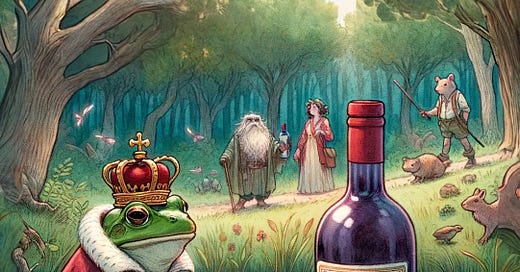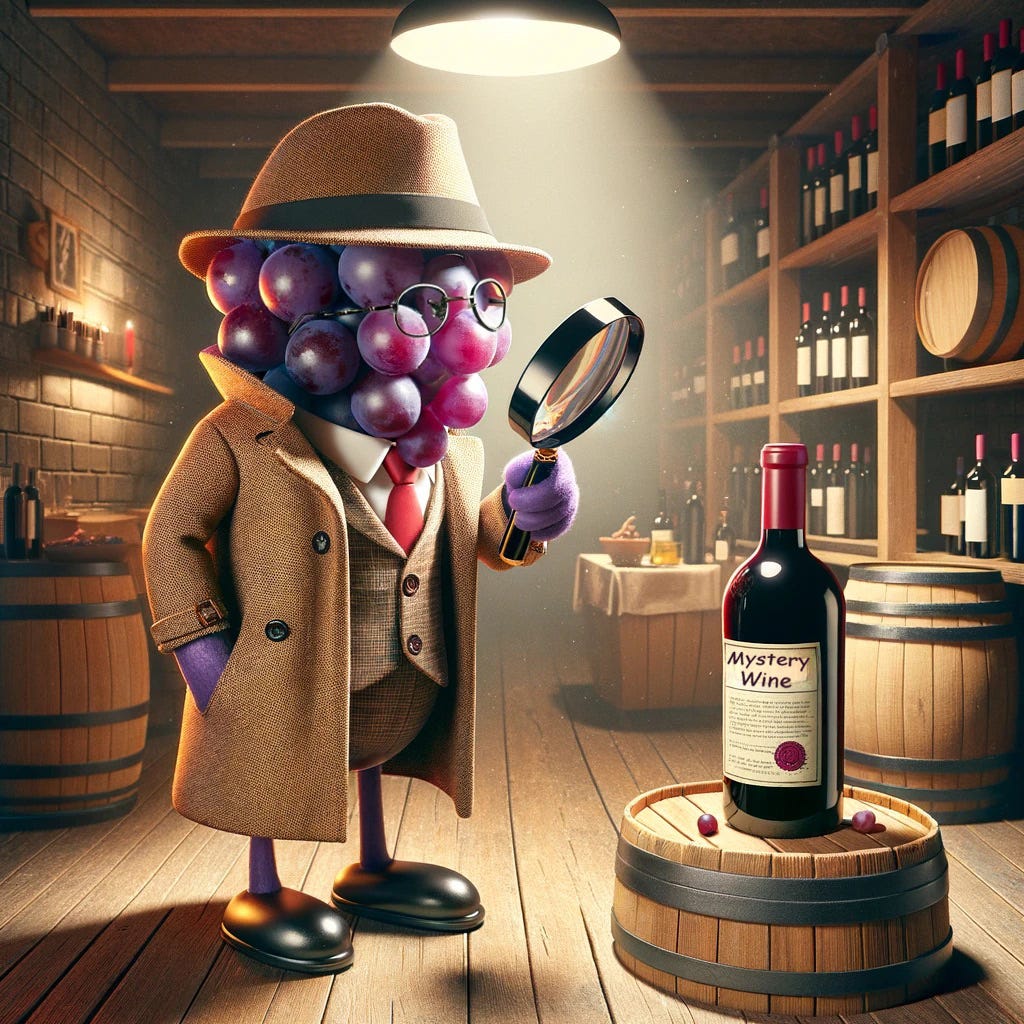NAPA VALLEY, Calif. — In the world of wine few grapes have endured as tumultuous a journey as merlot. Once hailed as a darling of the industry, its reputation took a nosedive following a misinterpretation immortalized in the 2004 film "Sideways." But as the dust settles on decades of misconception, it is time to revisit merlot and recognize its enduring greatness.
The saga of merlot's decline can be traced back to a pivotal moment in the early 1990s. A "60 Minutes" report in November 1991 highlighted the so-called French Paradox, which suggested that red wine consumption could reduce the risk of heart disease. This revelation sparked a red-wine frenzy across the United States, with consumers clamoring for the purported elixir.
In the rush to stock their cellars, many turned to merlot. Its softer, more approachable profile made it an attractive option for novice wine-drinkers, leading to a surge in demand. By 1995, California's merlot acreage had skyrocketed from 8,000 to 58,000 acres, a staggering increase driven by a misunderstanding of the grape's potential.
Unfortunately, this newfound popularity came at a cost. Many of the newly planted merlot vineyards were situated in less-than-ideal locations, resulting in a flood of mediocre wines that failed to showcase the grape's true character. As a wine columnist for the Los Angeles Times at the time, I witnessed firsthand the repercussions of this misguided fervor.
Fast-forward to the release of "Sideways" in 2004, and merlot's fate was sealed. The film's protagonist, Miles Raymond, famously declared, "I am not drinking any [expletive] merlot!" A single line of dialogue, delivered with disdain by actor Paul Giamatti, sent shockwaves through the wine industry and cemented merlot's status as a punchline.
But here's the truth: Merlot is far from deserving of such derision. In the right hands, it can produce wines of unparalleled beauty and complexity. Its versatility makes it a favorite among winemakers who appreciate its ability to thrive in a variety of terroirs and climates.
Merlot is a radically different grape variety from cabernet. Even though they share some commonalities (such as aromas of dried herbs), cabernet is the big brother, a significantly heftier red. But the best wines of Bordeaux often contain significant amounts of merlot because it adds serious personality to a sound and structured Bordeaux-styled red.
In the esteemed Pomerol district of France, merlot reigns supreme, prized for its grace and refinement. Iconic wines such as Château Petrus and Ornellaia's Masseto showcase its potential to produce wines of extraordinary depth and character.
In California, merlot continues to perform miracles when planted in the proper soils — regions with clay or gravel substrates and cooler than would accommodate cabernet. I also appreciate fine mountain-grown merlots, despite the fact that some of them can be fairly aggressive in tannins. Of course, that merely adds to the intrigue of the wines, which then become candidates to be aged in a cellar.
I've had the pleasure of tasting some truly remarkable California merlots over the years. From the cool Carneros vineyards to the sun-drenched slopes of Napa Valley, each bottle tells a story of craftsmanship and dedication. Wines from producers such as Duckhorn, Stag's Leap and Clos du Val exemplify merlot's ability to captivate and inspire.
Among the standout examples is the 1983 merlot from Buena Vista Winery in Carneros that I tasted in 1986. It was so spectacular that I believed it to be better than almost any cabernet I had ever tasted from Carneros, with perhaps two or three exceptions. Similarly, the merlot from Cuvaison Winery, grown in their cool Carneros vineyards, offers a testament to the potential of this varietal in the right hands.
Further exploration led me to discover the Congress Valley Vineyards, owned by Tony and Jo Ann Truchard, also in Carneros. Here, merlots showcased distinctive "olive-y" elements reminiscent of Pomerols.
In recent years, I have been more impressed by merlots that had some of the same olivelike elements I experienced in Pomerols. They included wines from Bernard Portet's Clos du Val, Freemark Abbey, Duckhorn, Stag's Leap, Trefethen, Silverado, Matanzas Creek and — going back decades — from Beringer (its Bancroft Ranch), Phil Baxter at Rutherford Hill and Clos du Bois in Sonoma County.
Merlot embodies a distinct personality rather than sheer intensity, a trait that may not captivate those enamored with the boldness of cabernets. However, this distinction proves advantageous for consumers, particularly in terms of affordability.
At their finest, California merlots typically hover around 13.5% alcohol, allowing their nuanced aromas and flavors to shine. When alcohol levels climb to 15% or higher, merlots risk losing their essential characteristics, veering toward a softness that may not complement food well.
While moderate-alcohol merlots have the capacity to age gracefully, they typically reach their peak within 10 to 12 years, maintaining intriguing characteristics for an additional decade or so.
In a recent tasting of six merlots, one distinguished itself as exemplary, albeit at a higher price point. Another showcased a stylish profile with commendable varietal character. Regrettably, the remaining wines suffered from insufficient acidity — a recurring issue in contemporary red winemaking.
Good value:
2018 Rancho Sisquoc Merlot, Santa Barbara County ($23)
A medium-weight wine with bright cherry and tea-leaf aromas. Balanced at 13.2% alcohol and an extremely tasty companion for dinner.
Splurge:
2021 Cuvaison Merlot, Carneros “Arcilla” ($70)
With 15% cabernet, this concentrated red exudes black-cherry and currant scents. Arcilla is the name of the clay substrate in which the winery’s merlot is growing. Best enjoyed after two or more years of aging. Decant for optimal flavor.
"Sideways" Screening and Panel Discussion, Friday, March 15, 7:45 p.m. in St. Helena.
As a part of the. upcoming The Napa Valley Fork2Film Festival, Cameo Cinema in St. Helena will present a screening of "Sideways," on Friday, March 15, at 7:45 p.m. The event includes a post-screening panel featuring Napa Valley winemakers known for Merlot. Part of the NVF2F schedule from March 14-17, the festival showcases 14 films centered on the role of food in culture, art, and sustainability. Tickets are $20, with rush tickets at $25 available 15 minutes before screenings. For further details, visit their website or call 707-963-9779. Location: 1340 Main St., St. Helena. Mention that you are a Napa Valley Features subscriber at the event, and receive a free Cameo button while supplies last.
If today's story captured your interest, explore these related articles:
Dan Berger has been writing about wine since 1975.







Thank you for this elegant description of Merlot that it so deserves. I hated the film "Sideways" because of its ridiculous snobbish dig at Merlot. I just considered the source and left in disgust. Nice to know you are in touch with Napa's Merlots as well as the other AOCs of note. Drink more Merlot!!!